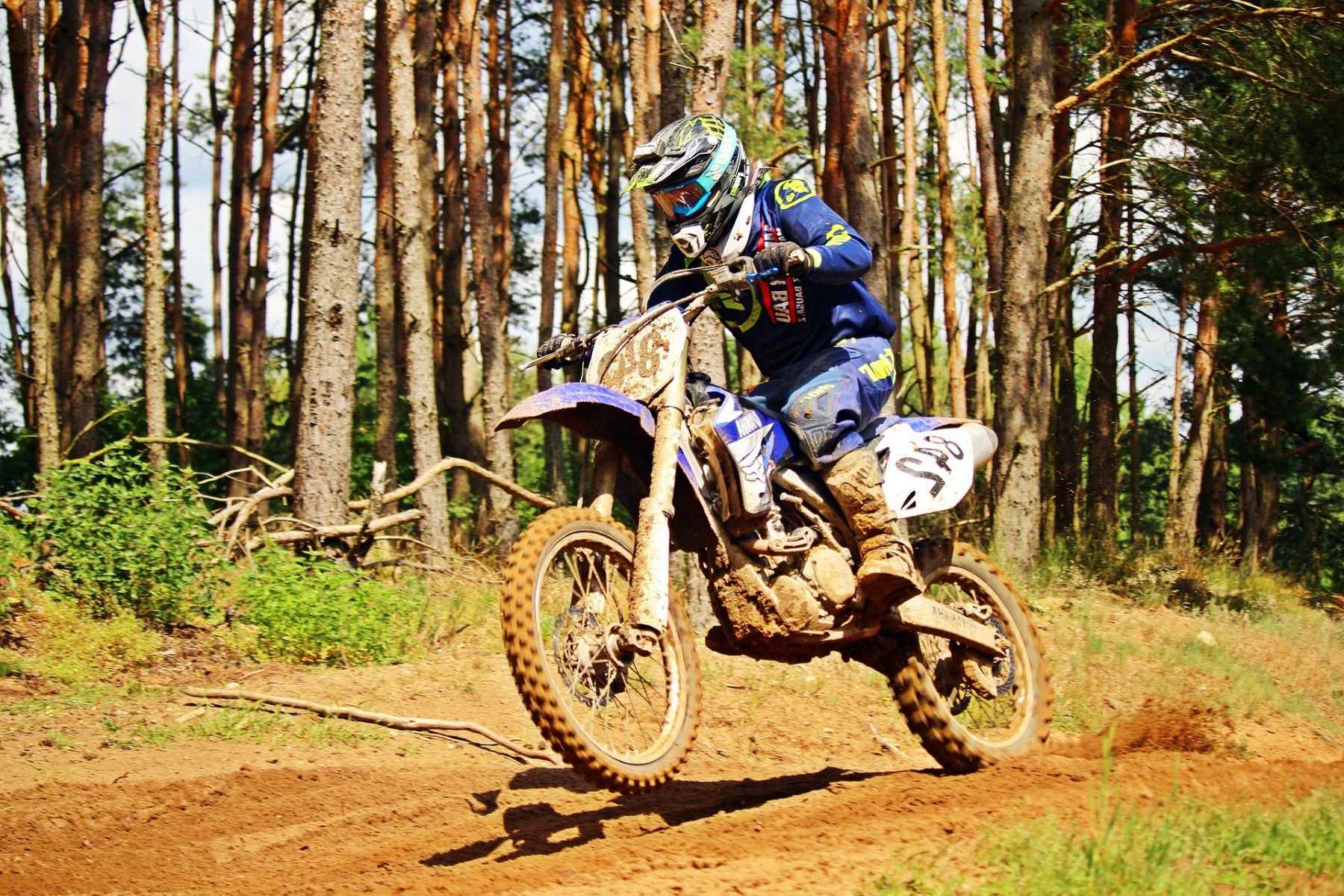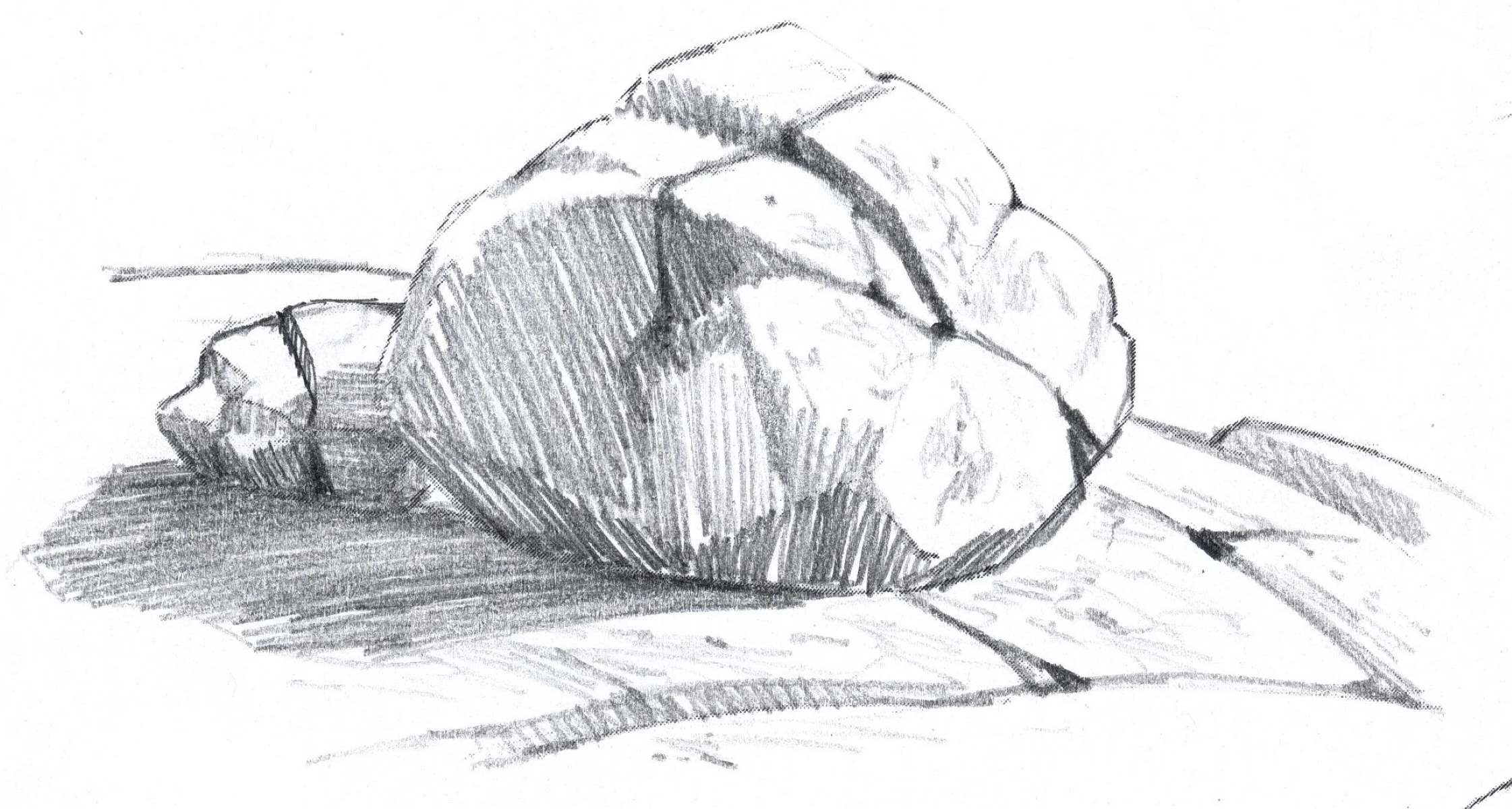

Sports
How To Ride A Dirtbike
Published: February 28, 2024
Learn the essential techniques and safety tips for riding a dirtbike in this comprehensive guide. Discover the thrill of off-road sports and master the art of dirtbike riding today!
(Many of the links in this article redirect to a specific reviewed product. Your purchase of these products through affiliate links helps to generate commission for Regretless.com, at no extra cost. Learn more)
Table of Contents
Introduction
Riding a dirt bike is an exhilarating and adventurous activity that allows enthusiasts to explore rugged terrains and experience the thrill of off-road riding. Whether you're a beginner looking to delve into the world of dirt biking or an experienced rider seeking to refine your skills, understanding the fundamentals of dirt bike riding is essential for a safe and enjoyable experience.
Dirt biking offers a unique blend of adrenaline-pumping excitement and the opportunity to connect with nature in a way that traditional road riding cannot match. The freedom to navigate through challenging landscapes, conquer obstacles, and revel in the raw beauty of off-road environments is what makes dirt biking a truly captivating pursuit.
In this comprehensive guide, we will delve into the essential aspects of dirt bike riding, from selecting the right bike and safety gear to mastering basic and advanced riding techniques. Additionally, we will explore the significance of proper maintenance and care to ensure the longevity and optimal performance of your dirt bike. Moreover, we will provide insights into finding suitable riding locations that cater to various skill levels, allowing riders to immerse themselves in the thrill of off-road adventures.
Whether you aspire to conquer rugged trails, navigate through sandy dunes, or tackle challenging motocross tracks, this guide will equip you with the knowledge and skills necessary to embark on an exhilarating dirt biking journey. So, gear up and get ready to embrace the adrenaline-fueled world of dirt bike riding!
Choosing the Right Dirtbike
Selecting the right dirt bike is a pivotal decision that significantly influences your riding experience. With a myriad of options available, it's essential to consider various factors to ensure that the chosen dirt bike aligns with your skill level, riding preferences, and physical stature. Here's a comprehensive guide to help you make an informed decision when choosing the perfect dirt bike:
Determine Your Skill Level
Assessing your skill level is the first step in choosing a dirt bike. For beginners, lightweight and user-friendly bikes with manageable power outputs are recommended to facilitate the learning process. Intermediate riders may opt for bikes with increased power and advanced features, while experienced riders might seek high-performance models designed for aggressive off-road riding.
Consider Your Riding Style
Different dirt bikes are tailored to specific riding disciplines, such as trail riding, motocross, enduro, or dual-sport riding. Understanding your preferred riding style will guide you in selecting a bike that complements your riding aspirations. For instance, if you enjoy conquering technical trails and rugged terrains, a trail bike with robust suspension and off-road capabilities would be ideal.
Evaluate Bike Size and Ergonomics
Ensuring a proper fit is crucial for comfort and control while riding. Consider the bike's seat height, handlebar position, and overall ergonomics to determine if it suits your physique. Taller riders may prefer bikes with higher seat heights, while shorter individuals might opt for models with lower seat heights for better stability and maneuverability.
Research Different Models
Research various dirt bike models from reputable manufacturers to identify the features, specifications, and performance attributes that align with your requirements. Compare engine displacements, suspension systems, and chassis designs to gain insights into the bike's capabilities and suitability for your intended riding activities.
Seek Expert Advice
Consulting with experienced riders, professional mechanics, or staff at reputable motorcycle dealerships can provide valuable insights and recommendations. Their expertise can help you narrow down your options and make an informed decision based on your riding goals and budget.
By considering these factors and conducting thorough research, you can confidently select a dirt bike that harmonizes with your skill level, riding style, and physical attributes, setting the stage for an exhilarating and fulfilling off-road riding experience.
Safety Gear and Equipment
Prioritizing safety is paramount when engaging in dirt bike riding. Equipping yourself with the appropriate safety gear and essential equipment not only enhances your protection but also instills confidence and peace of mind during off-road adventures. Here's an in-depth exploration of the crucial safety gear and equipment required for a safe and enjoyable dirt biking experience:
Helmet
A high-quality, properly fitting helmet is the most critical piece of safety gear for dirt biking. It provides vital protection for the head and brain, safeguarding riders from potential impacts and injuries. When selecting a helmet, opt for a model specifically designed for off-road riding, featuring a sturdy outer shell, impact-absorbing liner, adequate ventilation, and a secure retention system.
Protective Apparel
Investing in durable and protective riding apparel is essential for minimizing the risk of abrasions, cuts, and impact injuries. This includes a rugged off-road jersey, durable pants with integrated padding, gloves for hand protection and grip, and sturdy off-road boots designed to shield the feet, ankles, and lower legs from impacts and debris.
Body Armor
For added protection, consider incorporating body armor into your gear ensemble. Body armor typically includes a chest protector, shoulder pads, elbow guards, and back protection, offering comprehensive coverage against potential impacts and falls. Ensure that the body armor fits comfortably and securely without restricting mobility.
Goggles
Dirt biking exposes riders to dust, debris, and flying particles, making goggles an indispensable accessory. Quality off-road goggles provide clear vision, protection against roost and debris, and fog resistance, enhancing visibility and safeguarding the eyes from potential hazards.
Neck Brace
A neck brace is a valuable safety component that helps reduce the risk of neck and collarbone injuries during falls or impacts. It works in conjunction with the helmet to stabilize the neck and limit excessive movement, offering crucial protection in the event of a crash.
Hydration Pack
Staying hydrated is vital during off-road excursions, especially in challenging and physically demanding riding conditions. A hydration pack allows riders to conveniently carry water and stay hydrated without interrupting their riding experience, promoting endurance and overall well-being.
Tool Kit and Spare Parts
Carrying a compact tool kit and essential spare parts is imperative for addressing minor mechanical issues or adjustments while riding. Common items to include are tire repair kits, multi-tools, spare tubes, and basic hardware, ensuring that riders can handle unforeseen maintenance requirements on the trail.
By prioritizing the acquisition and utilization of the aforementioned safety gear and equipment, dirt bike riders can significantly mitigate the inherent risks associated with off-road riding, fostering a safe, responsible, and enjoyable dirt biking experience. Remember, safety should always be the top priority when embarking on off-road adventures.
Basic Riding Techniques
Mastering fundamental riding techniques is essential for developing confidence, control, and proficiency in dirt bike riding. Whether you're a novice rider eager to hone your skills or an experienced enthusiast seeking to refine your technique, understanding and practicing basic riding techniques is crucial for a safe and enjoyable off-road experience.
Body Positioning
Proper body positioning plays a pivotal role in maintaining balance, stability, and control while navigating diverse off-road terrains. Riders should adopt a standing position on the footpegs, with knees bent and elbows slightly flexed to absorb impacts and maintain a relaxed yet assertive posture. Distributing weight evenly on the footpegs and leaning the bike beneath you during turns enhances stability and maneuverability, allowing for seamless navigation through challenging landscapes.
Read more: How To Be A Player
Throttle and Clutch Control
Mastery of throttle and clutch control is fundamental for modulating speed, managing traction, and executing precise maneuvers. Gradual and deliberate throttle inputs, coupled with seamless clutch engagement, facilitate smooth acceleration, deceleration, and gear changes. Understanding the nuances of throttle and clutch manipulation empowers riders to adapt to varying terrain conditions, conquer obstacles, and maintain optimal traction without compromising control.
Braking Techniques
Effective braking techniques are integral to safe and controlled riding. Riders should familiarize themselves with both front and rear brake usage, understanding the appropriate application of each to achieve balanced deceleration and maintain stability. Utilizing the front brake for initial slowing and the rear brake for controlled stops, while maintaining a balanced and upright riding posture, enhances braking efficiency and minimizes the risk of skidding or loss of control.
Cornering and Turning
Mastering cornering and turning techniques is essential for navigating tight trails and conquering challenging terrain features. By looking ahead and initiating turns with controlled leaning and body positioning, riders can negotiate corners with precision and confidence. Understanding the principles of weight transfer and maintaining consistent throttle inputs throughout the turn facilitates smooth and controlled cornering, allowing riders to maintain momentum and conquer tight bends with finesse.
Negotiating Obstacles
Encountering obstacles such as rocks, roots, and ruts is an inherent aspect of off-road riding. Employing proper riding techniques, including weight shifting, precise throttle control, and strategic line selection, enables riders to effectively navigate through obstacles while minimizing the risk of getting stuck or losing momentum. By approaching obstacles with a proactive and adaptive mindset, riders can confidently conquer challenging terrain features and elevate their off-road riding prowess.
Read more: How To Draw A Strawberry
Practice and Persistence
Ultimately, mastering basic riding techniques requires dedicated practice and persistence. Regularly honing fundamental skills in a controlled off-road environment allows riders to build confidence, refine their technique, and adapt to varying riding conditions. Embracing a continuous learning mindset and seeking guidance from experienced riders can further enhance proficiency and elevate the overall riding experience.
By diligently mastering and applying these basic riding techniques, dirt bike enthusiasts can cultivate a strong foundation for safe, confident, and exhilarating off-road adventures. Whether navigating winding trails, conquering rugged terrain, or tackling challenging obstacles, the mastery of fundamental riding techniques is the cornerstone of a fulfilling and rewarding dirt biking journey.
Advanced Riding Techniques
Mastering advanced riding techniques elevates a rider's proficiency, enabling them to conquer demanding terrain and navigate challenging obstacles with finesse and precision. These advanced skills not only enhance the overall riding experience but also instill confidence and control in the face of formidable off-road conditions.
Jumping and Airborne Maneuvers
The ability to execute jumps and airborne maneuvers is a hallmark of advanced off-road riding. Riders must develop a comprehensive understanding of takeoff, flight, and landing techniques to ensure safe and controlled aerial maneuvers. Proper weight distribution, throttle control, and body positioning are crucial for achieving stable and controlled flight, while precise landing techniques, such as absorbing impact with the legs and maintaining a balanced posture, minimize the risk of crashes and injuries.
Rhythm Section Mastery
Navigating rhythm sections, characterized by consecutive jumps and undulating terrain, demands advanced riding skills and precise timing. Riders must adeptly modulate speed, maintain a consistent rhythm, and employ strategic body positioning to smoothly traverse rhythm sections. Mastery of rhythm sections involves seamlessly transitioning between jumps, effectively absorbing impacts, and maintaining momentum to conquer these dynamic and challenging off-road features.
Read more: How To Draw A Dragon
Technical Hill Climbing and Descending
Conquering steep inclines and descents requires advanced riding techniques that encompass throttle control, weight distribution, and strategic line selection. Riders must skillfully modulate throttle inputs to manage traction and momentum while ascending or descending technical terrain. Additionally, maintaining a balanced and centered posture, coupled with precise weight transfer, is essential for optimizing traction and stability on challenging inclines and descents.
Off-Camber Riding
Off-camber terrain, characterized by uneven slopes and challenging camber angles, demands advanced riding proficiency and adaptability. Riders must adeptly adjust their body positioning and weight distribution to counteract the off-camber forces, maintaining traction and stability while navigating through off-camber sections. Understanding the principles of balance, controlled throttle inputs, and proactive line selection is pivotal for confidently conquering off-camber terrain features.
Advanced Cornering Techniques
Refining cornering techniques to navigate tight and technical turns with precision and speed is a hallmark of advanced off-road riding. Riders must master the art of controlled leaning, precise throttle modulation, and strategic line selection to execute swift and efficient cornering maneuvers. Advanced cornering techniques involve maintaining momentum, optimizing traction, and seamlessly transitioning between turns to navigate diverse off-road tracks and trails.
Continuous Skill Refinement
Achieving mastery in advanced riding techniques is an ongoing journey that requires dedication, practice, and a commitment to continuous skill refinement. Riders should seek opportunities to hone their advanced skills in controlled off-road environments, leveraging guidance from experienced riders and professional coaches to elevate their proficiency and confidence in tackling challenging off-road scenarios.
By diligently mastering these advanced riding techniques, dirt bike enthusiasts can elevate their off-road prowess, conquer formidable terrain, and embrace the exhilarating challenges of advanced off-road riding with confidence and finesse.
Read more: How To Graph A Parabola
Maintenance and Care
Maintaining a dirt bike in peak condition is essential for ensuring optimal performance, longevity, and rider safety. Diligent maintenance and attentive care not only preserve the bike's mechanical integrity but also enhance the overall riding experience. From routine inspections to proactive upkeep, here's a comprehensive overview of the crucial maintenance practices and care guidelines for dirt bike enthusiasts.
Regular Inspections and Servicing
Regular inspections form the cornerstone of effective dirt bike maintenance. Prior to each ride, it's imperative to conduct thorough pre-ride checks, examining vital components such as the tires, brakes, suspension, and controls for signs of wear, damage, or irregularities. Additionally, adhering to the manufacturer's recommended service intervals for oil changes, air filter replacements, and overall mechanical servicing is paramount for sustaining the bike's reliability and performance.
Cleaning and Lubrication
Keeping the dirt bike clean and well-lubricated is fundamental for preventing premature wear and corrosion. After each ride, meticulously cleaning the bike to remove dirt, mud, and debris safeguards critical components from contamination and abrasion. Furthermore, applying appropriate lubricants to the chain, pivot points, and moving parts preserves smooth operation and minimizes friction-induced wear, contributing to the bike's overall longevity.
Tire Maintenance
Tires are a pivotal aspect of a dirt bike's performance and safety. Regularly inspecting tire pressure, tread depth, and overall condition is crucial for optimal traction and stability. Maintaining the recommended tire pressure, replacing worn-out tires, and addressing punctures or damage promptly ensures that the bike's handling and grip remain consistent across diverse off-road terrains.
Read more: How To Repair An Alternator
Suspension Tuning and Setup
Fine-tuning the bike's suspension to suit the rider's weight, riding style, and terrain preferences is instrumental for achieving optimal handling and comfort. Adjusting the suspension sag, rebound, and compression settings in accordance with the manufacturer's recommendations or seeking professional suspension tuning services enhances the bike's responsiveness and stability, elevating the overall riding experience.
Engine and Mechanical Care
Caring for the dirt bike's engine and mechanical components is paramount for sustained performance and reliability. This includes regular oil and filter changes, inspecting and tightening fasteners, checking for fluid leaks, and addressing any abnormal noises or vibrations promptly. Adhering to the manufacturer's maintenance schedule and promptly addressing mechanical issues safeguards the bike's longevity and ensures consistent performance.
Storage and Protection
Properly storing the dirt bike in a dry, sheltered environment, away from moisture and extreme temperatures, safeguards it from corrosion and deterioration. Utilizing bike covers, employing rust inhibitors, and periodically starting the bike to circulate fluids during prolonged storage mitigates the risk of mechanical degradation and preserves the bike's condition during periods of inactivity.
By diligently adhering to these maintenance practices and care guidelines, dirt bike enthusiasts can uphold their bikes' reliability, performance, and longevity, ensuring that each off-road adventure is met with a well-maintained and dependable machine. Prioritizing proactive maintenance and attentive care not only fosters a safe and enjoyable riding experience but also preserves the inherent thrill and excitement of dirt bike exploration.
Finding Riding Locations
Exploring diverse and captivating riding locations is an integral aspect of the dirt biking experience, offering enthusiasts the opportunity to immerse themselves in varied terrains and scenic landscapes. Whether seeking adrenaline-fueled motocross tracks, rugged off-road trails, or expansive desert dunes, discovering suitable riding locations is essential for embarking on exhilarating off-road adventures.
Read more: How To Print On Shirts
Research and Local Knowledge
Researching potential riding locations and tapping into local knowledge are valuable strategies for identifying off-road havens that cater to diverse riding preferences. Engaging with fellow riders, joining online forums, and leveraging social media platforms dedicated to off-road riding communities can provide insights into hidden gems, popular riding spots, and local trails renowned for their scenic beauty and technical challenges.
Off-Road Parks and Trails
Off-road parks and designated riding trails offer purpose-built environments tailored for dirt biking enthusiasts. These facilities often feature a range of trails catering to different skill levels, from beginner-friendly tracks to advanced off-road challenges. Exploring off-road parks and trail systems provides riders with structured and well-maintained environments to hone their skills, connect with fellow enthusiasts, and revel in the thrill of off-road riding within a controlled and regulated setting.
Public Lands and National Forests
Public lands, including national forests and Bureau of Land Management (BLM) areas, present expansive and diverse landscapes ideal for off-road exploration. Researching the regulations and designated riding areas within public lands allows riders to access vast tracts of off-road terrain, from forested trails to open desert expanses, while adhering to responsible riding practices and environmental stewardship.
Private Property and Riding Clubs
Connecting with private landowners, riding clubs, and off-road associations can unveil exclusive riding opportunities on private properties and club-owned tracks. Building relationships with landowners and local riding organizations may grant access to unique and secluded riding locations, fostering a sense of community and camaraderie among riders while discovering off-road treasures off the beaten path.
Read more: How To Make A Ring
Scenic and Adventure Destinations
Seeking out scenic and adventure destinations renowned for their off-road allure opens doors to unforgettable riding experiences. From picturesque mountain trails to expansive sand dunes and rugged backcountry terrain, exploring scenic and adventure destinations allows riders to merge the thrill of off-road riding with the splendor of natural landscapes, creating lasting memories and captivating experiences.
Responsible Riding and Environmental Awareness
Regardless of the chosen riding locations, prioritizing responsible riding practices and environmental awareness is paramount. Respecting trail etiquette, adhering to designated riding areas, and minimizing environmental impact through sustainable riding behaviors ensures the preservation of off-road environments and fosters a positive relationship between riders and the natural landscapes they traverse.
By embracing the diversity of riding locations and adopting a conscientious approach to off-road exploration, dirt bike enthusiasts can embark on a journey of discovery, adventure, and exhilaration, immersing themselves in the boundless allure of off-road riding while respecting and preserving the natural environments that define the off-road experience.
Conclusion
In conclusion, the world of dirt bike riding is a captivating realm that beckons enthusiasts to embrace the thrill of off-road exploration, conquer challenging terrains, and forge unforgettable experiences in the great outdoors. From the fundamental aspects of choosing the right dirt bike and acquiring essential safety gear to mastering basic and advanced riding techniques, the journey of becoming a proficient dirt bike rider is a multifaceted and rewarding endeavor.
The process of selecting the perfect dirt bike involves a thoughtful consideration of one's skill level, riding style, and physical attributes, culminating in the acquisition of a machine that harmonizes with the rider's aspirations and capabilities. Equally significant is the prioritization of safety gear and equipment, which not only safeguards riders from potential hazards but also instills confidence and peace of mind during off-road escapades.
Mastering basic riding techniques forms the bedrock of a rider's proficiency, fostering control, confidence, and adaptability across diverse off-road terrains. As riders progress in their journey, delving into advanced riding techniques unlocks the potential to conquer formidable obstacles, navigate challenging terrain, and elevate the overall off-road experience to new heights.
Furthermore, the commitment to diligent maintenance and attentive care ensures that the dirt bike remains in peak condition, delivering optimal performance and reliability throughout countless off-road adventures. From regular inspections and cleaning to meticulous engine care and storage practices, proactive maintenance preserves the integrity of the bike and sustains its longevity.
The quest for suitable riding locations adds an element of exploration and discovery to the dirt biking experience, offering riders the opportunity to immerse themselves in diverse landscapes, connect with fellow enthusiasts, and revel in the raw beauty of off-road environments. Whether exploring off-road parks, public lands, private properties, or scenic adventure destinations, responsible riding practices and environmental stewardship are paramount for preserving the natural allure of off-road terrains.
In essence, the world of dirt bike riding is a tapestry of exhilarating challenges, breathtaking landscapes, and camaraderie among fellow enthusiasts. It is a realm where the pursuit of skill mastery, the thrill of exploration, and the preservation of natural environments converge to create an enduring and fulfilling off-road experience. As riders embark on their dirt biking journey, they are poised to embrace the adrenaline-fueled allure of off-road riding, forging indelible memories and embarking on a lifelong odyssey of adventure and discovery.





